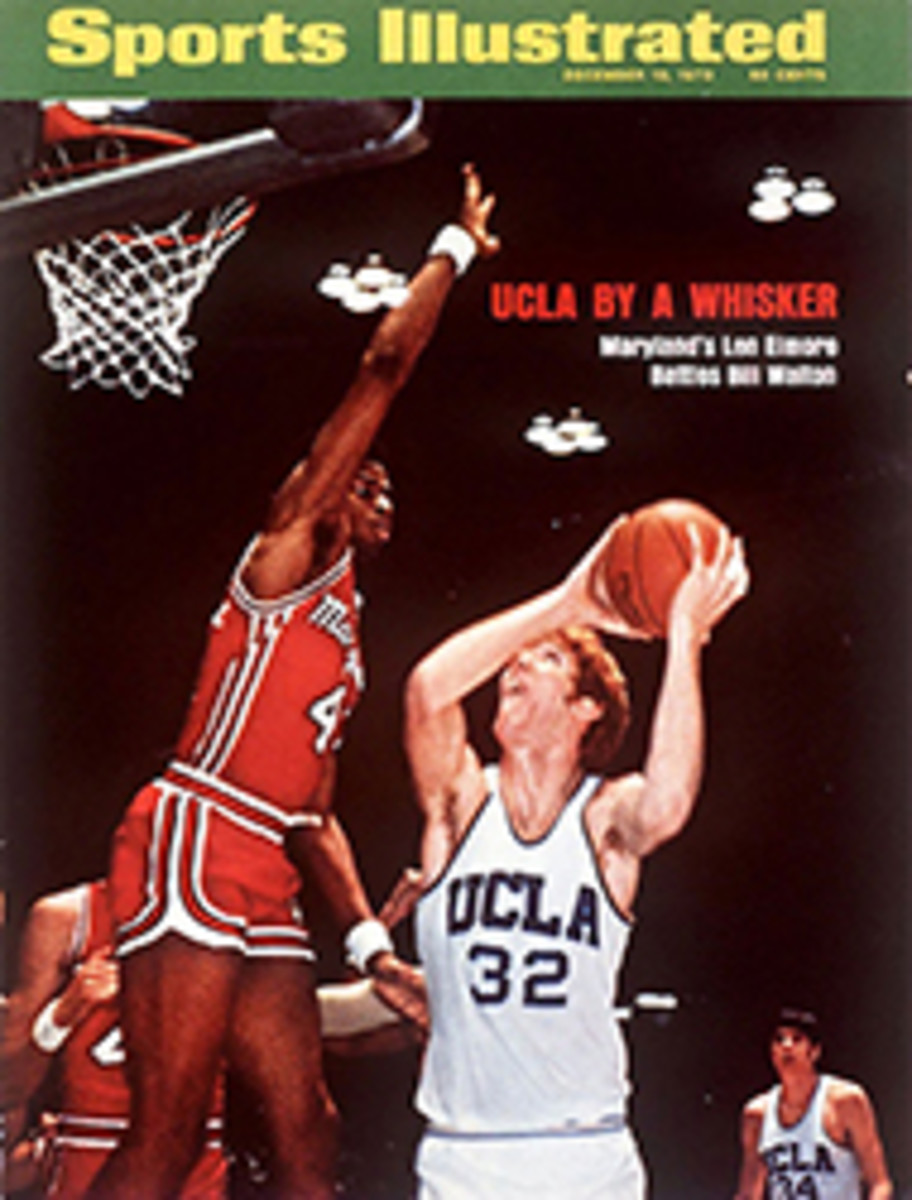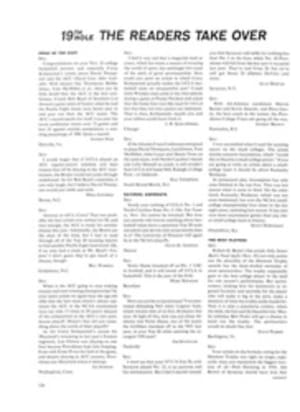
The Unlikeliest Millionaire
In the spring of 1940 a leathery gentleman of the turf and a baronial ranch owner from Texas flew in the face of an old horse breeder's adage and came up with a champion. The trainer, Max Hirsch, sent an obscure mare he owned named Stop Watch to be bred to Equestrian, a little-known stallion at Robert J. Kleberg's King Ranch near Kingsville. The result was a chestnut colt foaled on April 9, 1941 that became in 1947 the leading money-winner to that time. His name was Stymie.
It wasn't just that Hirsch and Kleberg had mildly violated the genetic imperative of good horse breeding, the one summed up by the saying, "Breed the best to the best and hope for the best." Hirsch and Kleberg came as close as possible to breeding the worst to the worst. In his time Equestrian had won just two very minor events. Stop Watch had won none. The only thing to recommend their foal was his grandsire on the paternal side, Equipoise, the celebrated Chocolate Soldier of the 1930s.
But nobody told Stymie about his humble beginnings, and so, in his seven seasons and 131 starts (only three of them under the colors of the King Ranch), he won 35 races, 25 of which were stakes, was second 33 times and third 28. He was unplaced in only 35 races. Stymie retired with earnings of $918,485, which made him the dollar champ of racing until Citation. For several years during the 1940s Stymie dominated New York tracks, becoming a kind of idol to the fans.
As a yearling on the King Ranch in 1942, there was nothing about Stymie to catch the eye. He was still an ordinary colt in the spring of 1943 when he finished seventh in his first start and 11th in his second. Those dismal efforts prompted Hirsch to drop the colt into a $1,500 claiming race for his third start, on June 2, 1943, at Belmont.
Trainer Hirsch Jacobs had noticed the colt's name in the overnight entries and had looked him over in the paddock before his first two races. A great admirer of Equipoise, Jacobs thought he saw a few fleeting signs of the gallant old champion in Stymie. On the morning of Stymie's third race Jacobs hurried to get to the track to file his claim. He got a late start, however, and almost didn't make it. Years afterward he said, "If I had run into traffic, I never would have been able to claim Stymie. I made it with a couple of minutes to spare."
Jacobs still didn't know what he had in this awkward, inexperienced colt. In fact, he took some risks with Stymie that later seemed appalling: he ran him in some more claimers. Fortunately, nobody saw the animal's potential, perhaps because Stymie improved so slowly. He did not win a race until his 14th start. In all, Stymie won four races and earned $15,935 in his first season. Jacobs had a nice profit, but the surface had not even been scratched. In 1944 in 29 starts Stymie won three races and earned $36,325.
The horse really blossomed in 1945, however, winning eight stakes, including the prestigious Butler, Brooklyn and Westchester Handicaps, while earning $225,375. In 1946 Stymie won seven stakes and $238,650. As a 6-year-old in 1947, at an age when most good stallions and all great ones are in stud, Stymie's career was just approaching its peak. He reached it on July 19, 1947 in a memorable race at Belmont Park.
The feature race that day was a new event, the $100,000-added International Gold Cup sponsored by the Empire City Racing Association. The race was designed to lure the best horses from abroad to meet the finest in this country. The English, Irish and French, leery of the dirt track at Belmont, stayed at home. The only foreign horses who did appear for the event were two Argentinebreds, Ensueno and Endeavour II. But there was a formidable array of domestic talent on hand. Assault, the King Ranch horse and Triple Crown champion in 1946, was the favorite. Phalanx, who ran for C. V. Whitney and had won the Belmont Stakes one month before, was there. So were Talon and the only speed horse in the field, Natchez.
All entrants carried scale weight, 126 pounds, except Phalanx, who as a 3-year-old got in at 112. The distance was a mile and five furlongs, once around the big Belmont oval after one furlong at the start. Assault was ridden by Eddie Arcaro and was just over 1 to 2 in the betting. Stymie, with Jockey Conn McCreary, was not quite 5 to 1. Natchez, with Ted Atkinson up, was 25 to 1.
The day was gray and wet and the track sloppy as the horses moved into the starting gate. The start was quick and good. Atkinson drove Natchez into an early lead, then decided to slow the pace, and he got away with a dawdling clocking for the first half mile of :48[3/5].
Closest to Natchez in the early going were Ensueno and Endeavour II. Arcaro was snugging Assault in fourth place. Stymie was fifth, about 10 lengths back of the leader, with Talon and Phalanx the trailers. Atkinson still had the pace his way at the far turn, a sluggish mile in 1:39, and Natchez still had plenty left for the certain challenges being readied behind him.
In the stretch Atkinson stole a glance over his shoulder and saw Arcaro making his move. Assault got to within a length at the eighth pole, but that was all. Now it was Stymie's turn. Atkinson was flat out on his horse's neck. His whip was still now—you don't hit a tiring horse. Instead, he began to drive and coax him. McCreary was as one with Stymie, and quickly they cut into Natchez' lead. A few strides from the wire Natchez still had it. At the wire it was Stymie by a neck.
It was Stymie's greatest victory, and it inspired the sardonic Arcaro to paraphrase Satchel Paige. "If you hear something coming in the stretch," he said, "never look back. It might be McCreary."
Meanwhile, back at the King Ranch, efforts were under way to duplicate the good luck with Stymie. It was fruitless. Stop Watch had 10 foals, all full or half brothers and sisters to Stymie. Only one of these—a half brother with the inelegant name of Oaf—won a race. The 10 foals earned $1,615 among them.
A math buff once totaled Stymie's mileage over his seven years of racing and came up with a figure of 142 miles, 170 yards of competitive running. With total earnings of $918,485, that comes to about $6,468 per mile. Max Hirsch and Bob Kleberg did only one thing wrong when they bred Stymie. They didn't keep him.

